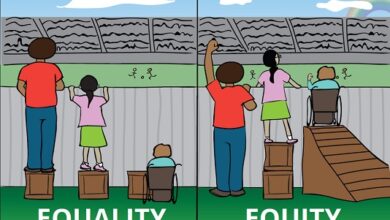What is Geothermal Energy Advantages and disadvantages
Geothermal Energy
Geothermal Energy ( or Geothermal Energy) is a type of renewable energy obtained through the heat coming from the interior of the Earth. The process of harnessing this energy is done through large holes in the ground, since the heat of our planet exists in a part below the surface of the Earth. From the Greek, the word “geothermal” is formed by the terms “ geo ”, which means Earth, and “ therme ”, corresponding to temperature.
In this way, this type of energy resource is obtained through hot rocks (dry and wet) and hot steam from the interior of the Earth. Geothermal energy began to be exploited at the beginning of the 20th century, although it was already used by ancient people for bathing and cooking food in the so-called hot springs. Currently it is produced in geothermal plants, where it is transformed into electrical energy.
As it is a renewable natural resource, it has a low environmental impact and is currently used for cooking, heating houses, buildings, swimming pools and even in the production of greenhouses for vegetables. Note that the famous hot springs are examples of geothermal water, heated inside the earth by contact with very hot rocks.
Geothermal Power Plants
The Power Plants or Geothermal Power Stations are the production sites of this type of energy, being implanted close to places where there is a large amount of steam and hot water. In this way, geothermal reservoirs provide the energy needed to power turbine generators, thus producing electricity. In 1904, the first Geothermal Power Plant in the world was built in the city of Larderello, Italy.
Advantages and disadvantages
Among the advantages of geothermal energy for the production of electricity, we can list the following items:
a) Does not operate by burning fuel. Thus, there is no need to import and purchase raw materials, reducing production costs. Less is spent on geothermal power plants than on oil or nuclear power plants, which have a high cost for purchasing primary products.
b) Does not harm the soil . Despite the internal perforations, geothermal energy does not attack the relief or wear away the soil, nor does it flood large areas or contaminate the water table, as with other energy sources.
c) Does not emit carbon dioxide or methane gas . The released steam does not severely harm the atmosphere, as it does not emit gases such as CO 2 and CH 4 .
d) Benefit for remote areas . In areas where there is not ample access to the electrical network, geothermal plants can quickly meet the needs of the population, especially in areas suitable for their installation.
e) It has a flexible production . The production of electricity in these plants may vary according to demand, not depending on water reservoirs, availability of raw materials, among others.
f) Not vulnerable to weather . Climate variations do not interfere with the operation of geothermal power plants, unlike what happens, for example, with solar or wind energy.
Among the disadvantages of geothermal energy, we can mention:
a) Eventual subsidence of the ground . Although they do not wear out the soil, geothermal power plants can wear out the inner areas of the crust, possibly causing shocks on the surface. Therefore, in some cases, it is necessary to inject water or another component to fill in the endogenous compositions.
b) Emission of H 2 S . Along with water vapour, it is common to release sulfur dioxide, which may not attack the atmosphere, but is harmful to human health, in addition to being highly corrosive and having an unpleasant odor.
c) Noise pollution and high local heating . Generally, geothermal plants generate a lot of noise, a fact that, added to the high local heating, makes it unfeasible to install houses and communities in their surroundings.
d) Possible contamination of rivers and lakes . Thermal fluids can release mineral compositions that, if not properly retained, can affect watercourses in areas close to the power plants.
e) High investment cost . Although the maintenance of geothermal plants is small, their construction and installation are expensive, due to the costly technology, a factor that may change in the coming years.
f) Operates only in certain places . As with most energy sources, geothermal can only be operated in favorable areas, with high internal heating and where access to thermal areas is easy and less expensive. This makes it unfeasible to use in most places.
Types of Energy
First of all, it is worth remembering that the term “energy” is closely related to work, action or movement, therefore, anything that is working is producing energy. There are several types of energy , of which the following stand out:
- Kinetic Energy : related to movement
- Mechanical Energy : related to strength
- Thermal Energy : related to temperature
- Electric Energy : related to electric potential
- Hydroelectric Power : related to water
- Chemical Energy : related to chemical reactions
- Wind Energy : related to the wind
- Solar Energy : related to the sun
- Nuclear or Atomic Energy: related to the disintegration of the nucleus of matter
Energy Resources
Energy resources are those that provide energy, being classified into: renewable natural resources (clean energy) and non-renewable (dirty energy). Thus, renewable resources are those that have the least environmental impact, as they are not depleted in nature because they are renewed in a given time. As renewable resources, geothermal, solar, wind, hydroelectric energy, among others, stand out.
In turn, non-renewable natural resources , the name itself indicates that they cannot be renewed in nature, that is, if that source is exploited indiscriminately, it may, over time, disappear and nature is unable to renew it. This type of energy resource causes a great environmental impact, unbalancing the Earth’s ecosystems, for example, nuclear energy and energy from fossil fuels (oil, coal, natural gas).

